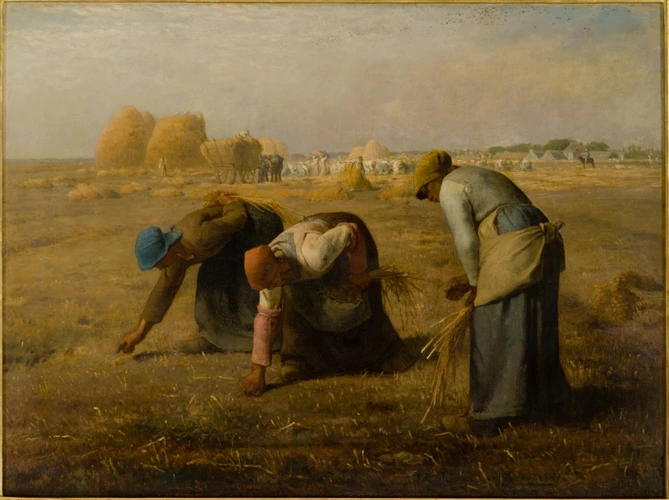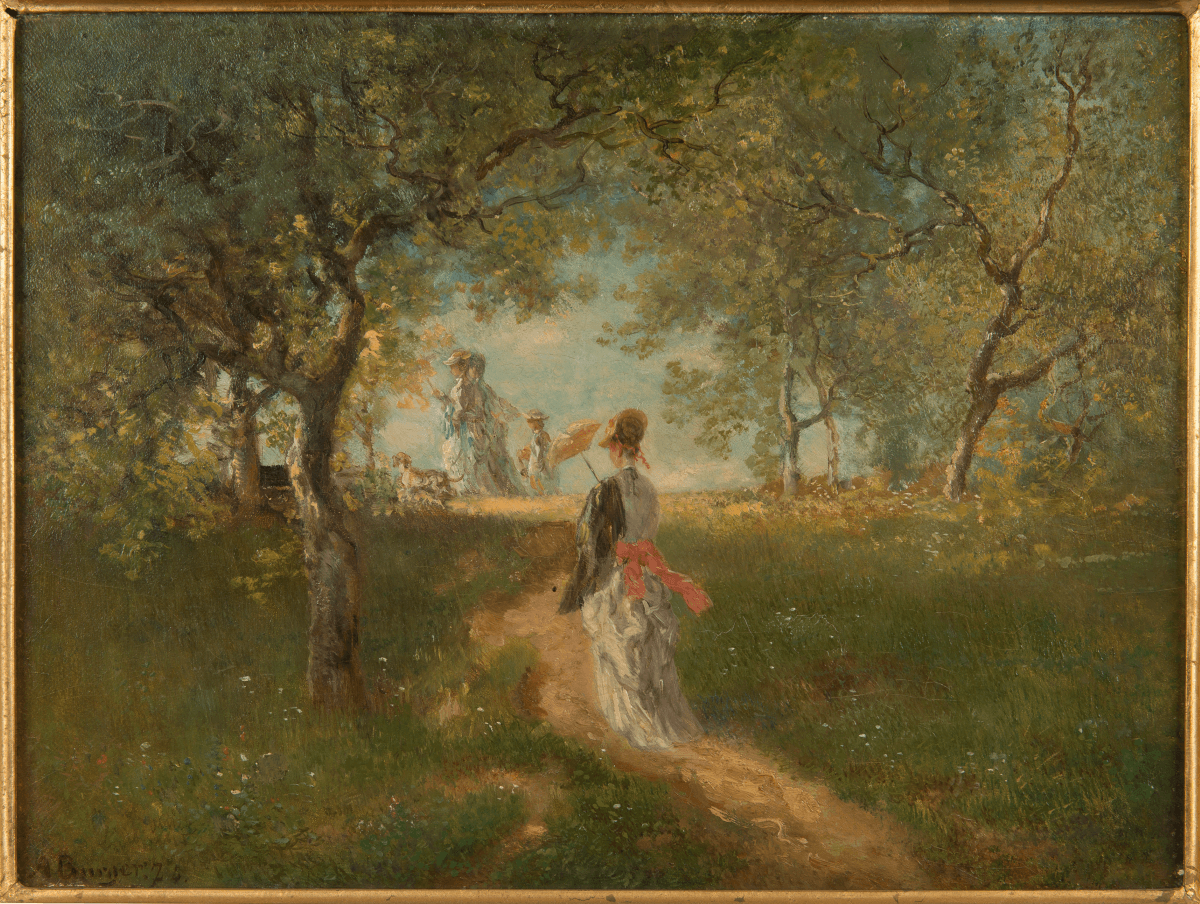Have you ever heard anything about the Worpswede art colony in the Teufelsmoor? Paula Modersohn-Becker fans probably have, since it was there that the artist lived and worked until her early death in 1907. The phenomenon of the artist colony is rooted in the 1840s and stretches from Barbizon in France to Worpswede outside Bremen to Skagen in Denmark – to name just a few places the artists conquered. As a countermovement to modern life in the expanding big cities, the creative minds in question settled in the countryside. They were interested in the picturesque landscapes and depicting the seemingly original way of life away from the metropolises. Even today, some of these colonies retain an unparalleled cult status. Here we present six highlights among art colonies in the 19th and 20th centuries.
1. Barbizon
The little town of Barbizon, located at the edge of Fontainebleau forest, is considered the prototype for many European art colonies. The development of Barbizon dates back to the year 1830, although it was only in the 1850s that Jean-François Millet helped make the place so extraordinarily popular. Millet’s interest was in simple, albeit exhausting, peasant activity. His central pictorial inventions revolve around rural life and the depiction of ploughing and threshing the fields or reading the ears of corn. What was groundbreaking in Millet’s depictions was the way in which he visualized the backbreaking work, namely in all its dignity and power. Here, Millet saw an unspoiled authenticity. Barbizon drew not only many French artistic figures such as Théodore Rousseau or Charles Émil Jacque, but also international artists like Max Liebermann, Mary Cassatt, and Eliza Haldeman.

Jean-François Millet, Des glaneuses (The female gleaners), 1857 © Musée d’Orsay, Dist. RMN-Grand Palais / Patrice Schmidt, Image via www.musee-orsay.fr
2. Kronberg near Frankfurt
The art colony in Kronberg, located in the Taunus hills outside Frankfurt, was founded around 1840 and is therefore among the oldest German artists’ settlements. Many of the artists living there were graduates of the Städelsches Kunstinstitut in Frankfurt. Key figures in the art colony were Anton Burger, Philipp Rumpf, Carl Theodor Reiffenstein, and Otto Scholderer. The Kronberg art colony clearly reveals a major trend of the 19th century: A turning away from the academic traditions of history painting towards themes of everyday life, farming, and the depiction or indeed exaltation of the seemingly unspoiled rural life. In pictorial terms, the Kronberg art colony tended towards Realism and dissolved as a result of the increasing popularity of Impressionism in Germany.

Anton Burger, Mädchen im Maien, Image via www.kronberger-malerkolonie.com
3. Dachau
In the first half of the 19th century, Dachau, close to Munich, attracted two painters from that city, namely Simon Warnberger and Johann Georg von Dillis, thanks to the beauty of the untouched moss landscape. Under clear skies, it was even possible to make out the peaks of the Alps, so it’s no wonder that landscape painters were drawn to it, and Dachau became home to artistic personalities such as Max Lieberman, Franz Marc, and Adolf Hölzel. Hölzel, in particular, helped Dachau to achieve high popularity, as he founded a painting school in 1899 that attracted many female artists, since women were not permitted to study at the state academies. The outbreak of World War I signaled the end of the art colony in Dachau.

Franz Marc, Moorhütten im Dachauer Moos (1902), Image via WikiCommons
4. Worpswede
These days, Paula Modersohn-Becker is undoubtedly the most prominent figure from the Worpswede art colony in the Teufelsmoor, northeast of Bremen. Overwhelmed by its moorland landscape with the idyllic birch trees and canals, the painters Fritz Mackensen, Otto Modersohn, and Hans am Ende settled there from 1889 onwards. It was only in 1894, however, that the Worpswede Artists’ Association was founded with Fritz Mackensen and Heinrich Vogeler, only to be disbanded in 1899 as a result of interpersonal conflicts. Artists nevertheless continued to live in Worpswede after that time and continued to be perceived as a uniform grouping. Female artists like Modersohn-Becker and Clara Rilke-Westhoff were joined by the likes of Hermine Rohte, Julie Wolfthorn, Ottilie Reylaender, and Maria Franck, who all spent time in picturesque Worpswede.



5. Skagen
From Worpswede to Scandinavia: Skagen, the northernmost town in Denmark, was home to the eponymous group of artists from the 1870s onwards. Copenhagen-based painters Michael Ancher, Karl Madsen, and Viggo Johansen took over this former fishing village, which lies on Denmark’s northernmost point, and married local women. These included Anna Brøndrum, later the wife of Michael Ancher. The landscape and genre painters visualized the grandeur of the Danish dunes and heathland, with a typical practice being open-air painting and exploration of the simple, but very hard life of the fishermen and their families. These days, the painter Anna Ancher is considered the best-known representative of the art colony.

Michael Ancher, Mandskabet reddet (Crew rescued), 1894, Image via smk.dk
6. Monte Verità
When it comes to idyllic landscapes, then of course we mustn’t forget Switzerland: The settlement project at Monte Verità – the “Mountain of Truth” – was founded in 1900 on a hill overlooking the village of Ascona in Ticino. The main focus of the group around Ida and Jenny Hofmann, Henri Oedenkoven, and Karl and Gusto Gräser was initially less on fine art and more on an avant-garde as part of the life reform movement, which sought to bring body, nature, and culture into harmony with one another. Essentially, the group eschewed all animal products, coffee, and alcohol.
In order to free the body from social norms, they would dance in the open air in lightweight garments or even naked. Participants in such events included Mary Wigman and Sophie Taeuber-Arp. Over time, the place developed into a sanatorium that drew an international bohemian crowd. Other visitors included Hermann Hesse, Heinrich Vogeler, Jean Arp, Countess Franziska zu Reventlow, and the iconic dancer Isodora Duncan. In the 1920s, the utopian project came to an abrupt end when the mountain was bought by the influential banker and art collector Eduard von der Heydt and a fashionable hotel built upon it.


[Translate to English:]
Beide Abbildungen: Image via www.monteverita.org